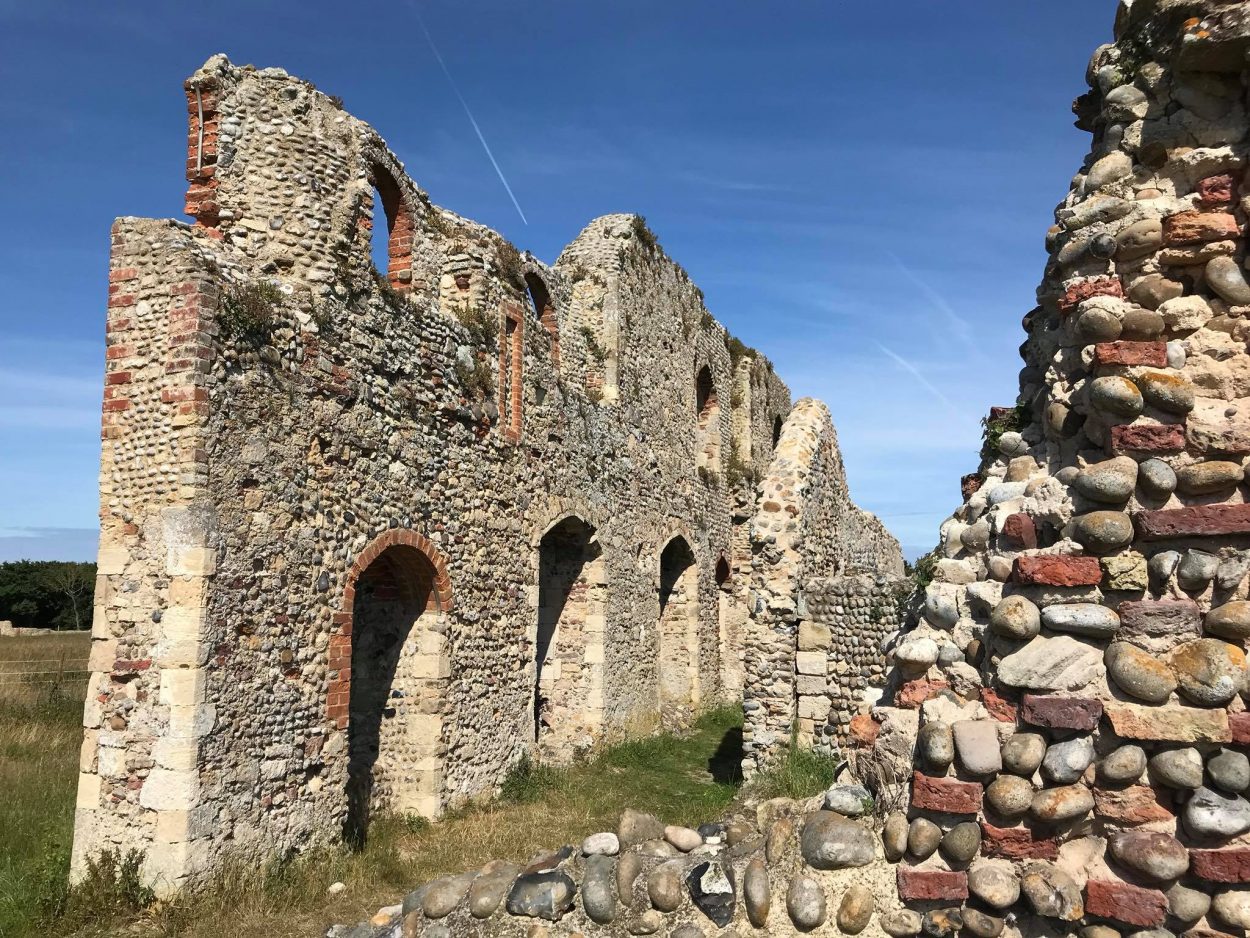Dunwich, located in Suffolk, England, was an important port and trading centre, until storms and coastal erosion engulfed the town, making it now the largest underwater medieval site in Europe.
Early settlement in the area dates from the Roman period, with the construction of a late Roman coastal fort, and a proposed associated civil settlement. Sparse remains discovered in the vicinity includes a Roman tumulus, and masonry trawled from the nearby seabed, in addition to Roman material repurposed for the construction of Greyfriars monastery, and the chapel at Minsmere. During this period, four major Roman roads appear to converge on Dunwich, suggesting that it was an important site even during Roman times.
According to the Historia ecclesiastica written by Bede the Venerable, an Anglo-Saxon settlement at Dunmoc (it is claimed that Dommoc is an older name-form of Dunwich, although this is the subject of scholarly debate) became the capital of the Angles under King Sigebert early in the 7th century AD. Sigebert gave Felix of Burgundy a “see” at Dunmoc, and established the seat of the Anglo-Saxon bishops in the Kingdom of East Anglia.
After the Norman conquest of England in AD 1066, the Domesday book, a manuscript record of the “Great Survey” of England, gives mention to the title of “Lord of Dunwich”, and lands being granted to William Malet by William the Conqueror.
Upon the accession of Henry I in AD 1101, the prosperity of the town led to the confiscation of Dunwich from the Malet family, allowing the chartering of the yearly fee-farm payments to be directed towards the crown.
Between the 11th and early 13th century AD, Dunwich’s economy and population boomed through the development of the marine fishing industry in the North Sea, emerging as England’s 6th wealthiest commercial centre and trading port.
The town had extensive trade networks exporting grain, salt, cloth, and wool to ports across Europe, reaching as far north as Iceland. Contemporary accounts described Dunwich as a “Towne of good note abounding with much riches and sundry kind of merchandise”. At its peak, Dunwich covered an area almost on par with medieval London, with an estimated population of between 3,000 to 5,000 inhabitants.
Dunwich was planned along four main streets – Bridgegate, Middlegate, Gildengate and Southgate – connecting to a market square, town hall, a mint, and at least eighteen ecclesiastical buildings of which two still remain – the Greyfriars monastery, and St James Chapel connected to the Leper Hospital.
By the 13th century AD, a shingle split known as Kingsholme began to partially block the port, preventing large merchant vessels from using the town as an import/export destination hub. Combined with severe flooding events, many of the town’s population began to relocate further away from the coast, or leave Dunwich altogether, starting the beginning of the town’s decline.
Severe coastal storms led to the erosion of the Suffolk coastline, resulting in parts of the town to be relocated (evidenced by the Greyfriars monastery, which was originally built on the town’s east side, but relocated to the western town boundary). A national economic crisis, and the Black Death in AD 1348, exacerbated a rapid drop in the town’s economy, and the abandonment by many of the inhabitants.
Probably the final lasting blow to Dunwich was the dissolution of the monasteries by Henry VIII in the 16th century AD. The loss of income generated by the monastic complexes of Greyfriars, Blackfriars, and the Templar church of St Marys, meant that there was little revenue left to maintain coastal defences.
Over the following centuries, long-shore drift erosion proceeded in progressively invading the town, eventually wiping almost every trace of Dunwich from the Suffolk coastline. As a legacy of its previous significance, the parliamentary constituency of Dunwich retained the right to send two members to Parliament until the Reform Act 1832, and was one of Britain’s most notorious rotten boroughs.
In more recent years, an acoustic imaging study by the University of Southampton, and the Touching the Tide project has revealed the ruins of churches, shipwrecks and hundreds of medieval buildings, submerged up to 10 metres beneath the waves.
